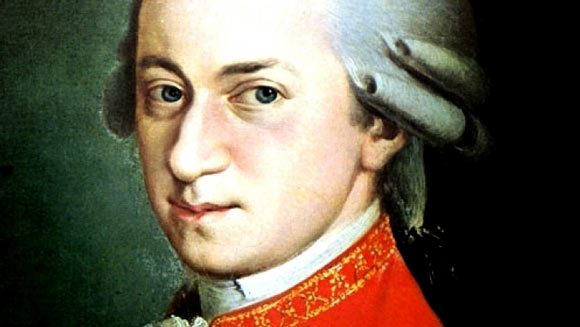
Wolfgang Amadeus Mozart, simply referred to as Mozart, was born in 1756 in the Austrian town of Salzburg. The youngest of seven siblings, Mozart displayed tremendous skill behind the keyboards and piano from an unconventionally early age of 4. His father and elder sister were Mozart’s teachers, often including him in their musical sessions. However, what ultimately set Mozart apart from all the other classical composers of his time was his incredible ability and quickness with learning new instruments and composing new pieces, all before the age of 10. So grand were Mozart’s capabilities with instruments like the piano and violin that his father quit his passion for composing and began concentrating entirely on molding Mozart’s talents, and bringing them up on a more professional platform.
Belonging to a family of music, Wolfgang Mozart would often travel around Europe with his siblings and father in his early years. These trips took him to places like the courts of Munich, London, Paris and other royal abodes of the time. Along the way, Mozart met composers and famous music icons like Josef Mysliveček and Giovanni Martini, that later paid off with a fellowship in the well-renowned Accademia Filarmonica. It is worth noting that all this time, he had been composing new pieces quite often, given however much he knew of music then. Some of the operas composed by Mozart around the 1770s include Mitridate, re di Ponto (1770) and Ascanio in Alba (1771), amongst others like Lucio Silla (1772). This phase of compositions ended with what is often referred to as one of Mozart’s most popular works, the individually performed choral music composition Exsultate, jubilate (1773). In the coming years, Mozart extensively travelled in France and Italy, writing opera works such as La finta giardiniera (1775) and the “Paris” Symphony (1778), the latter being one of his earliest symphonies which was inherently made for a large orchestral performance.
Close to the making of the opera, Idomeneo (1980), an Italian piece that is often referred to embody instrumental techniques and arrangements from French classical music, Mozart became enthralled by German composers like Johann Bach and George Handel. He spent the next few years developing arrangements, considered to have been an effort to build on the works and arrangements used by these great composers. This was displayed quite profoundly in works like The Magic Flute and Symphony No. 41, where the use of the Baroque Style of compositions is apparent. After a brief stint away from opera, Mozart began collaborations with Lorenzo Da Ponte and was to produce two works that not just had an everlasting impact on the classical music enthusiasts then, but have managed to remain popular to this day. These included The Marriage of Figaro (1986) and Don Giovvani (1987). Surprisingly enough, his last year was one of immense importance, as he wrote and composed on an extensive scale. Some of the most recognized works of 1791 include the Piano Concerto, the Clarinet Concerto and Ave Verum Corpus, performances that are still heard to this day.
Despite passing away at an early age of 34, Wolfgang Amadeus Mozart was a living embodiment of classical opera music and has remained one to this day. He was often described as a hard-working man, who could not help but possess an incredibly humble and affectionate personality. Even though Europe at the time had mostly embraced the popular Baroque Music, Mozart explored and experimented with various other genres such as symphony, opera, chamber and string quartet music and constantly implored to diversify the themes music was written in back in the late 18th century.